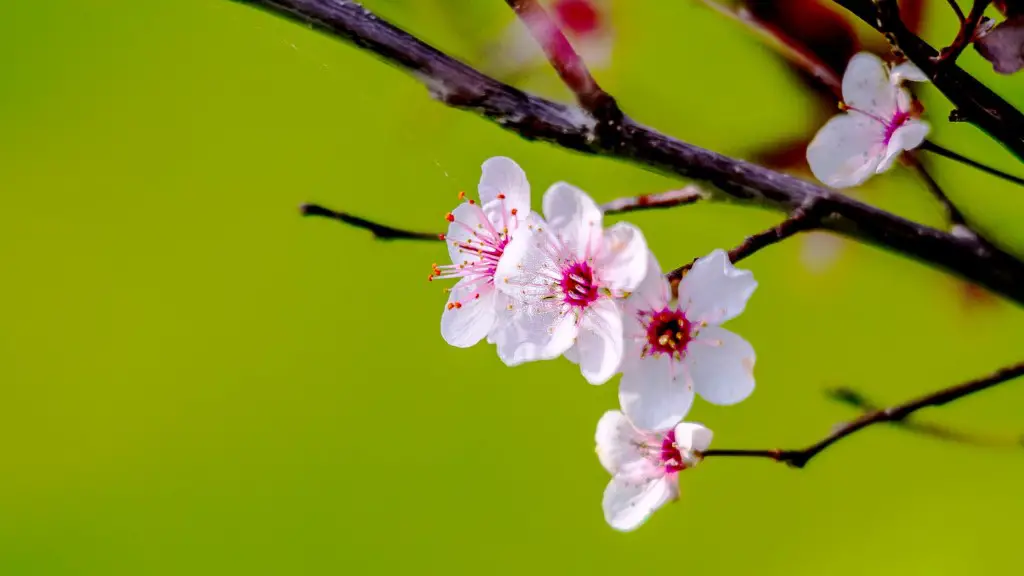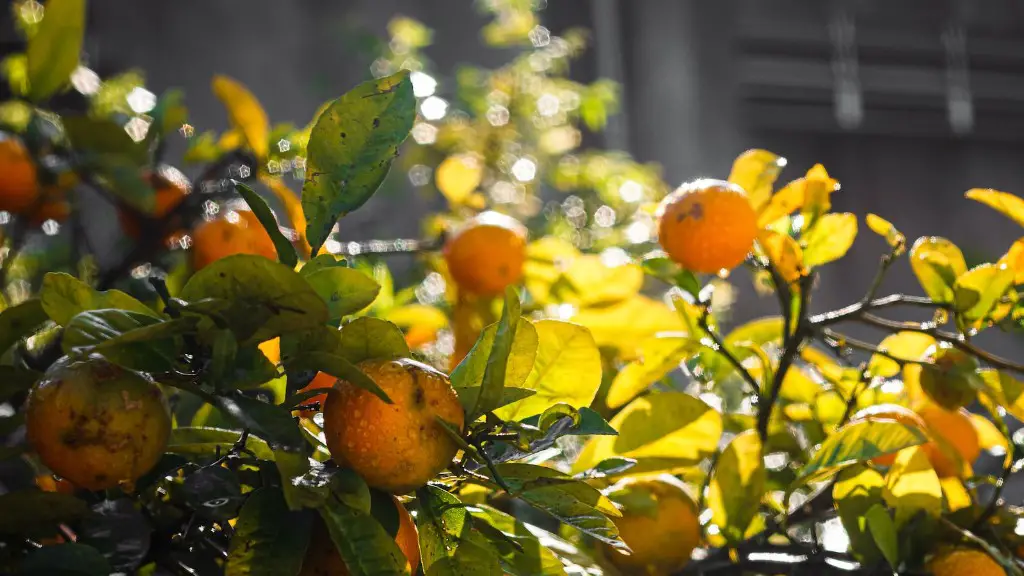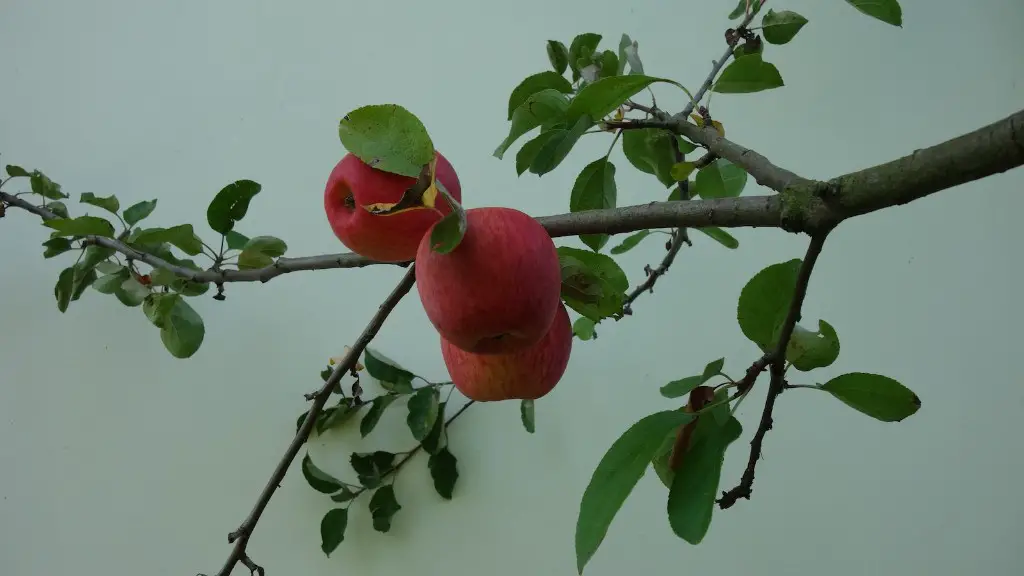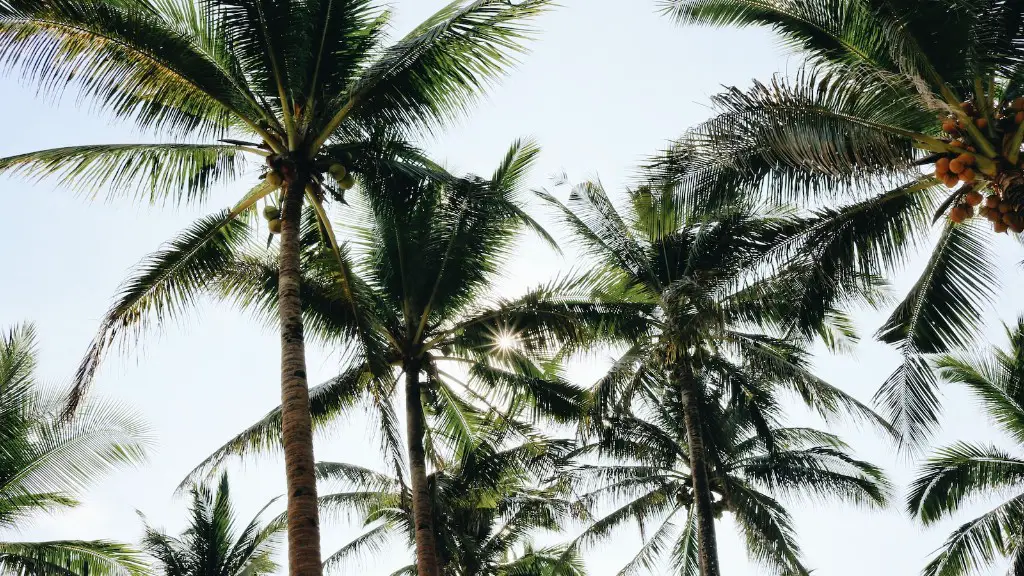How Long Until a Cherry Tree Bears Fruit?
Cherries are a delicious and popular fruit. They may be sweet or sour, and come in a variety of colors. Before anyone can enjoy a juicy cherry, they must first grow on a cherry tree. So, how long does it take for a cherry tree to bear fruit?
According to experts, it takes two to four years before a cherry tree will begin to bear fruit. This time frame can vary greatly depending on the variety of tree and the growing conditions. In warmer climates, the tree may be able to produce fruit sooner and in cooler climates, the tree may take longer.
When growing a cherry tree from seed, the time until the tree can produce fruit will depend on many factors. Generally, it will take at least three years before any cherry tree from seed will bear fruit. If the seed is from a grafted tree, the time may be shorter.
When planting a cherry tree from a nursery, it will have an established root system, which could reduce the time before it produces fruit. Depending on the variety of tree, the tree may begin to bear fruit in as little as two years. Fruit production should happen reliably after about three to five years.
Even if it takes several years for a cherry tree to produce fruit, this does not mean it is not growing. The tree will grow quickly in the first few years and reach heights of up to 30 feet tall and a canopy of 25 feet wide. It will require regular maintenance and pruning to keep it healthy and productive.
Before planting a cherry tree, it is important to visit a nursery and find a variety that will suit the local climate and growing conditions. Many varieties can tolerate cooler temperatures, while some will thrive in hot, dry climates. Selecting the right tree for the local climate will ensure the best possible results.
With proper care and maintenance, a cherry tree should bear fruit within two to four years of planting. Depending on the variety and environmental conditions, this time frame can vary greatly. With the right tree and adequate care, anyone can enjoy their own cherry harvest in just a few short years.
Fertilizing the Cherry Tree
The key to producing a bountiful harvest from a cherry tree is regular fertilization. The tree needs to be fertilized at least once a year, and more frequently while it is still young. Fertilizers should be applied in the fall, just after the tree has stopped fruiting, but before the leaves begin to fall. Organic fertilizer or compost can also be used to provide essential nutrients to the tree.
Organic matter, such as compost or leaf mulch, should be added to the soil around the tree. This will help retain moisture and discourage weeds from competing with the tree’s roots. In general, an inch of organic matter should be added in areas where rainfall averages 20 inches or less annually, and two inches should be added in areas with more than 20 inches of annual rainfall.
Fertilizers should be applied in a circular pattern around the tree, about 10–12 inches away from the trunk. When applying chemical fertilizers, read and follow the instructions on the packaging. Over-fertilizing can cause nutrient deficiencies and plant damage, so it is important to follow the recommended application rates.
It is also important to monitor the soil’s pH levels and adjust fertilizing accordingly. Most cherry trees prefer a soil pH of 6.0-6.5, but some varieties can tolerate slightly acidic soils. For optimal growth and fruit production, regular testing and adjustment of soil pH is recommended.
Pruning the Cherry Tree
Pruning is an important part of cherry tree maintenance. Pruning helps to manage the tree’s size, improve air circulation, and promote flower and fruit production. Pruning should be done each year, in late winter before bud break. This will ensure that the tree is healthy and well-shaped.
During pruning, dead, diseased, and damaged limbs should be removed. Also, branches that are rubbing against each other should be pruned away. This will reduce the chance of disease and provide the tree with the best chances for a healthy season of growth and fruiting.
When pruning, avoid removing more than one-third of the tree’s living tissue. This helps to ensure that the tree has enough energy reserves to produce new branches and leaves. Any large branches that are removed should be cut at the branch collar, which is the swollen area on the underside of the branch where it connects to the trunk.
It is important to sterilize the pruning tools before and after pruning. This will help to prevent the spread of disease to healthy parts of the tree. A diluted mixture of rubbing alcohol and water is a good choice for sterilizing pruning tools.
Pollination of Cherry Trees
Most cherry trees require at least one other pollinator in order to set fruit. Some varieties are self-pollinating, meaning that they can fertilize themselves by transferring pollen from the flowers’ anthers to the pistils. But for the majority of varieties, either two different cherry trees or one cherry tree and one compatible pollinator tree are needed.
The easiest way to ensure successful pollination is to purchase two different varieties, one to act as the pollinator and one that requires pollination. When planting two different varieties, it is important to pay attention to the flowering times of each variety. Make sure that the flowering times match up so that the trees can be pollinated.
Pollination can also be achieved by hand. This requires the removal of the flower clusters and using a small brush to transfer pollen from the stamens to the pistils of the flowers. This method is labor-intensive, and generally not recommended for large orchards.
Cherries are a delicious and nutritious addition to the garden. To ensure a bountiful harvest, it is important to choose the right variety for the local climate, provide adequate fertilization and regular pruning, and ensure successful pollination. With proper care, a cherry tree should bear fruit within two to four years.
Harvesting the Cherries
The optimal time to harvest cherries depends on the variety of cherry tree. Generally speaking, sweet cherries are harvested when they are firm, plump, and their color is a deep red to almost black. Sour cherries, on the other hand, are ready to harvest when there is a pinkish hue to them.
Harvesting cherries also requires a bit of patience, as the fruit takes a while to develop. Sweet cherries will usually be ready to harvest towards the end of summer, while sour cherries will be ready a bit earlier. Observing the trees and sampling the fruits can help to determine when the cherries are ripe and ready for harvest.
When harvesting, be sure to pick the cherries before the birds do. The birds can ruin an entire crop in a short time, so it is important to be vigilant and pick the cherries as soon as they are ripe. For the best flavor, the cherries should be picked during the cool morning hours.
When picking cherries, it is important to use the right tools. A small pruning shear can be helpful for harvesting individual cherries, but for larger batches of cherries, a picking pole should be used. This is a pole with a curved metal hook or metal basket that can be used to gently pluck the cherries without damaging them.
Harvested cherries should be eaten or preserved right away. If they need to be stored, they should be kept in a cool, dry location. Properly stored cherries can stay fresh for up to a month.
Cherry Tree Diseases and Pests
Cherry trees are susceptible to a variety of diseases and pests. Keeping up with proper maintenance and inspection can help protect the tree from damage. Common diseases include bacterial canker, powdery mildew, and leaf spot, while common pests include aphids, borers, and Japanese beetles.
The first step in protecting the tree from disease or pests is to keep it healthy and vigorous. This requires regular fertilization, pruning, and adequate water. Any diseased or damaged leaves or branches should be pruned away to prevent the spread of the infection to healthy parts of the tree.
Inspect the tree regularly for signs of disease or pest infestations. If possible, identify and address the issue before it has a chance to spread. Chemical pesticides may be necessary for severe infestations, but organic methods, such as beneficial insects and traps, should be used whenever possible.
One of the best ways to protect a cherry tree from disease and pests is to establish a good relationship with a local nursery or arborist. A nursery can advise on the best varieties for the local climate and offer helpful tips for proper maintenance. An arborist can provide advice on the best ways to protect the tree from pests and diseases.





